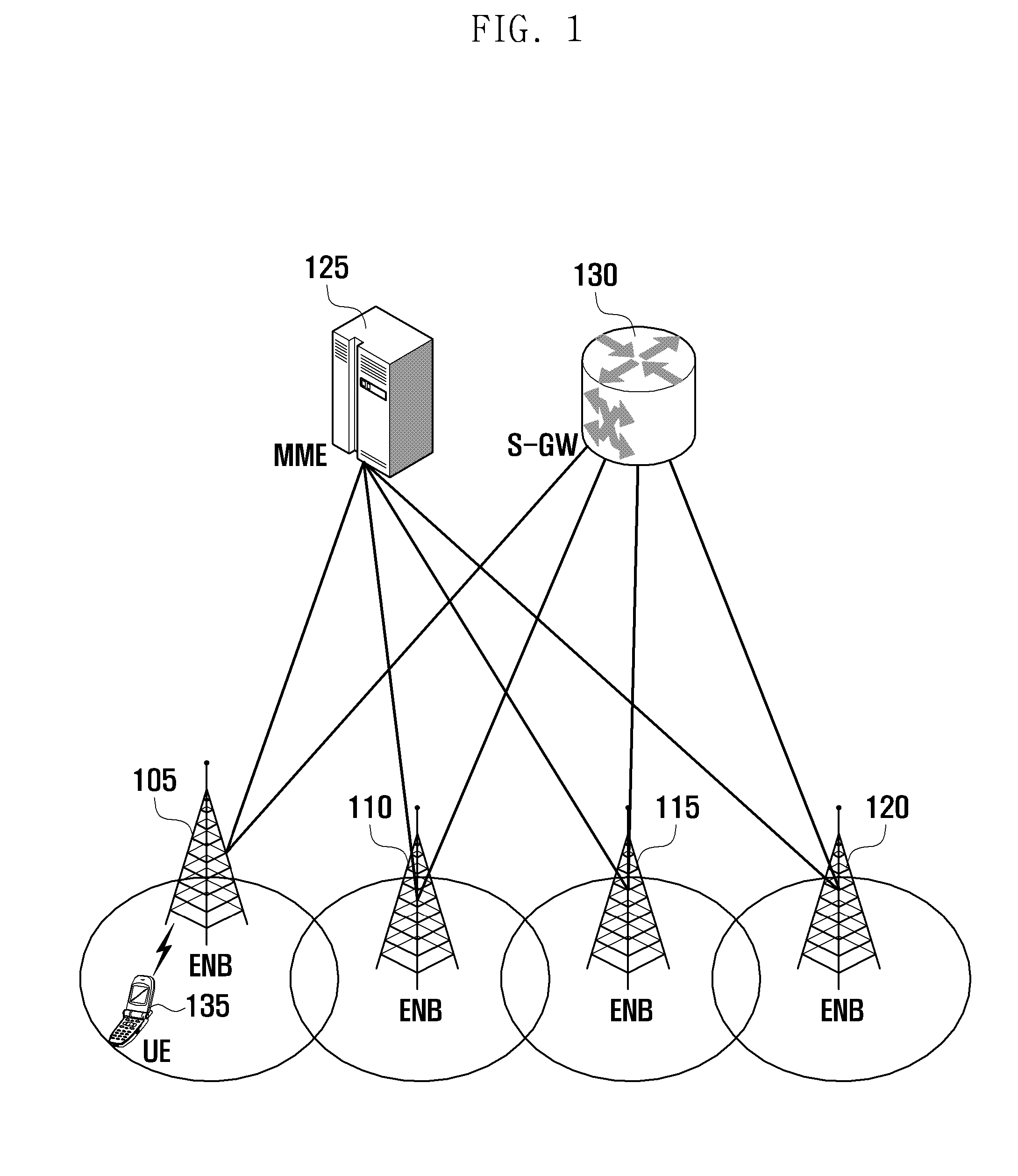Method and apparatus for transmitting and receiving data by using plurality of carriers in mobile communication systems
a mobile communication system and carrier technology, applied in the field of mobile communication system methods and apparatus for communicating data using a plurality of carriers, can solve problems such as significant battery power consumption, and achieve the effect of detecting small cells quickly
- Summary
- Abstract
- Description
- Claims
- Application Information
AI Technical Summary
Benefits of technology
Problems solved by technology
Method used
Image
Examples
first embodiment
[0045]The first embodiment of the present invention is comprised of configuring a small cell as the SCell to the UE with a very demanding amount data or instructing the UE established a connection on the frequency different form that of the small cell to perform uplink transmission on the frequency of the small cell for handover to the small cell, performing uplink transmission at a predetermined strength using predetermined frequency and time resource on the frequency, reporting, at the small cell device received the uplink transmission of the UE, this to the macro cell eNB, and determining, at the macro cell eNB, whether to configure the small cell as an SCell to the UE based thereon or perform handover of the UE to the small cell.
[0046]The overall operation of the first embodiment is described briefly with reference to FIG. 5.
[0047]The UE 530 receives uplink signals and transmits downlink signals through macro cell operating in f1. At this time, the UE configure uplink transmissi...
second embodiment
[0112]Recently, with the commercialization of various packet services, sporadic small packet transmissions occur frequently. In typical mobile communication systems including LTE, it is inevitable to establish a signaling connection and data bearer for packet transmission no matter how the packet is small. In the above procedure, a large number of control messages are exchanged and, if a large amount of UEs perform the connection establishment procedure for small size data communication, this may cause significant overload to the network and degradation of battery performance of the UEs. The present invention proposes a method and apparatus capable of allowing the UE to stay in the connected state in order to solve such a problem.
[0113]Typically, if data occurs to the UE in the idle state, the UE transitions from the idle state to the connected state to transmit / receive data. If there is no data transmission / reception during a predetermined period, the network has the UE transmissio...
third embodiment
[0166]The third embodiment of the present invention proposes a method of using the procedure simplified as compared to the normal RRC connection setup procedure, when the UE configures RRC connection in the same cell, by storing the UE context during a predetermined period although the RRC connection of the UE is released.
[0167]FIG. 13 shows the overall operation of the third embodiment.
[0168]Referring to FIG. 13, the UE 1305 in the RRC connected state communicates data with the eNB 1310. If the data communication stops, the eNB 1310 starts a predetermined timer and, if the data communication is not resumed before the expiry of the timer at step 1317, considers release of the RRC connection of the UE 1305. The eNB 1310 releases the RRC connection of the UE 1305 according to a predetermined rule and determines whether to release or preserve the UE context during a predetermined period. For example, if the UE is of generating small size data sporadically as a result of the past traffi...
PUM
 Login to View More
Login to View More Abstract
Description
Claims
Application Information
 Login to View More
Login to View More - R&D
- Intellectual Property
- Life Sciences
- Materials
- Tech Scout
- Unparalleled Data Quality
- Higher Quality Content
- 60% Fewer Hallucinations
Browse by: Latest US Patents, China's latest patents, Technical Efficacy Thesaurus, Application Domain, Technology Topic, Popular Technical Reports.
© 2025 PatSnap. All rights reserved.Legal|Privacy policy|Modern Slavery Act Transparency Statement|Sitemap|About US| Contact US: help@patsnap.com



